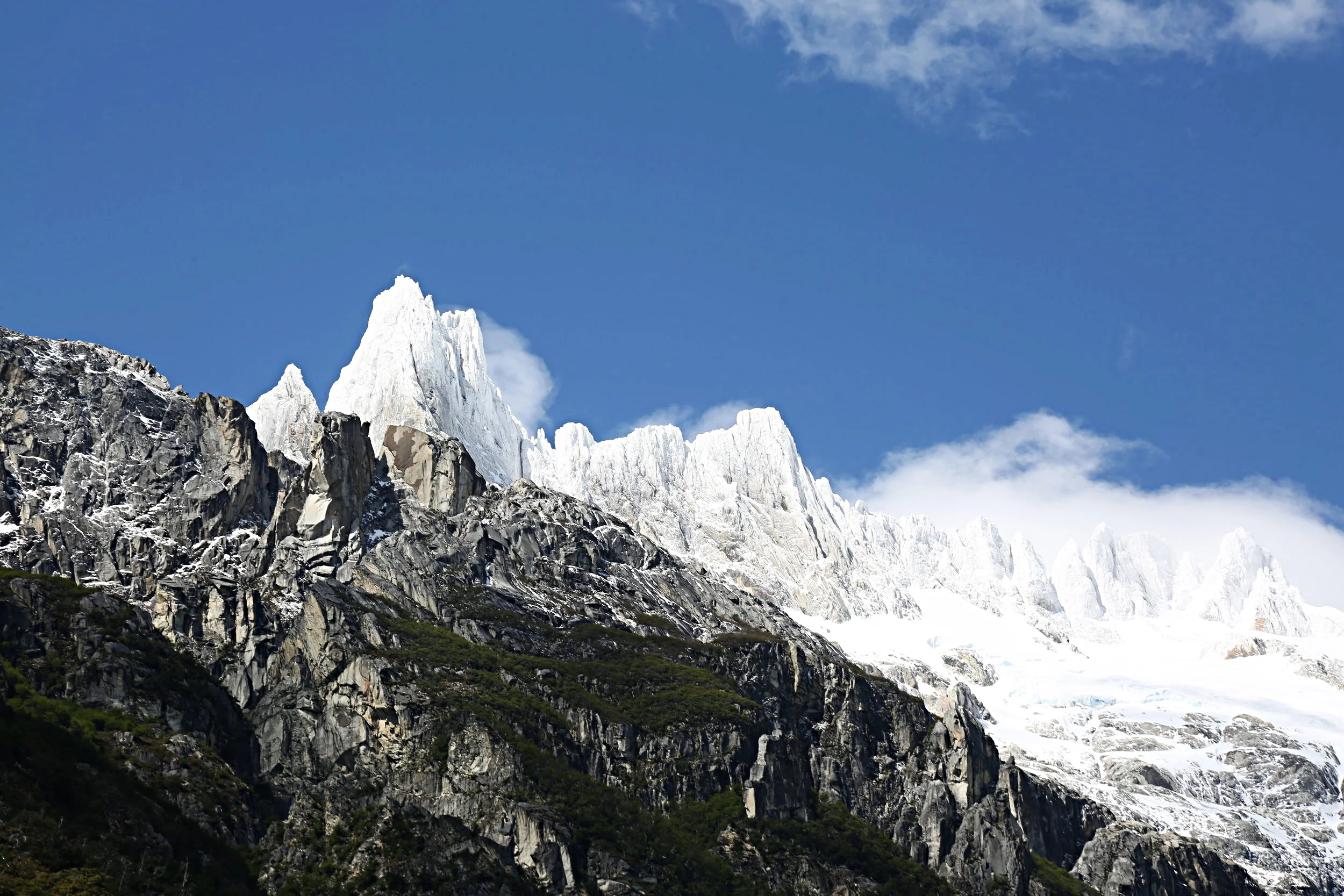Colonia Glacier GPS Rescue
/PAEX maintains several glacier monitoring systems that have been installed by the University of Colorado, the University of Nevada, and the University of Utah. These devices measure the rate of flow of the Colonia glacier and broadcast that data directly to satellites, allowing scientists around the world to observe patterns and change on the ice field. For the past few weeks, though, a few of the monitors have failed to transmit their signal. The problem could be as simple as a need for new batteries. Or it could be something more complicated. Given the harsh winter conditions on the ice, there are many possibilities of what could have gone wrong.
It takes about two days to reach the monitors. First, we cross Lago Colonia in PAEX’s motorized dinghy – about a one hour journey over frigid water. Then we hike up to Camp Five of the AGT – known as the Condor’s Nest for its stunning views over the surrounding valleys. We are traveling light and moving quickly, though wet and icy rock sometimes makes our path slick.
When we do arrive, we’re surprised to see that the problem is not just a simple battery failure. The whole transmitter has been devoured by a wave of ice – most of it is frozen below the ground. Every now and then this happens, and it’s not all that surprising given that the Colonia glacier advances at a rate of nearly a meter per day!
Chipping away slowly at the ice with our crampons, we manage to excavate the device and then reset it on a nearby bluff. The project isn't finished yet - we'll need to be in touch with colleagues in the United States to know if the data has resumed transmitting - but we know this is a big step towards getting the machine back on line.
With the transmitters back upright, and hopefully stable for many months to come, we head back to Sol de Mayo, where we're greeted by a welcoming committee of eager dogs.





